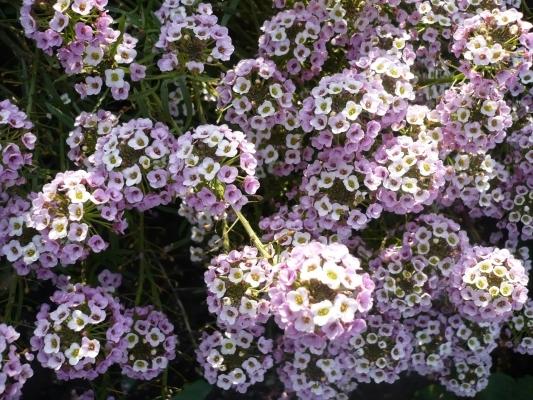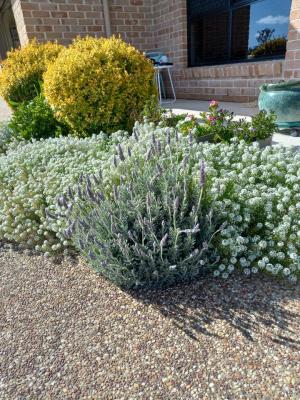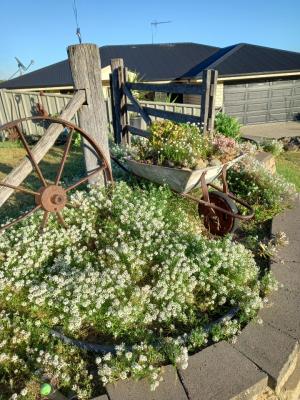By Beatrice Hawkins
I spend a lot of time reading and looking up random information but when anything gardening comes my way that always gets read! Recently I saw some gardening tips for beginners so of course, that was immediately read and some I will repeat here.
1. The number of seeds listed on a packet bears no resemblance to the number of plants that will grow! I thought this was an accurate fun fact. Who hasn’t carefully planted seeds to be disappointed with the germination rate? The plan is plant more than you need.. you can always pinch out the excess or carefully transplant to another spot or even give the excess away to another gardener!
2. Make use of your ’volunteer’ plants. I have many things that just come up each year. Alyssum, poppies, little chrysanthemum daisies, African daisies and the list goes on. Volunteers that appear randomly each year. My garden would be very dull without them. Like the human volunteers that keep many things going in our town, the plant volunteers keep my garden looking reasonable with no effort from me!.. very valuable!
3. Know how to identify the weeds. While this seems obvious what they meant was know whether they are annual or perennial. All are going to be a problem as they are all going to set seeds if they are not removed. Perennials tend to have deeper root systems and be harder to remove.
At the moment I have huge quantities of milk thistle coming up in my lawn and in the garden. Obviously I didn’t remove them all last season and they seeded really well!
As small seedlings they look very similar to my big poppies so I’ve probably accidentally thinned the poppies in my garden when I’ve been weeding. The ones in the lawn have been sprayed so hopefully there will be less to germinate after the next rain.
4. Limit the width of your garden beds. While I love the look of wide beds of colour I long ago realised that they are really impractical. Having to climb into beds to weed or pick flowers compacts the soil and runs the risk of damaging plants. Similarly wide vegetable beds make it difficult to harvest. To me, the ideal width is governed by my ability to reach in. Double my arm length if it is possible to get to either side of the bed but if it is against a fence or a building, one arms reach is the limit.
5. Not all bugs and insects are pests. Lady birds eat aphids so should be encouraged. Bees, very obviously, are to be encouraged as pollinators. I love to sit on my patio with a cuppa and watch the blue banded bees, tiny native bees and the familiar honey bees enjoy the lavender that grows near the path. Butterflies also are to be encouraged as they also are pollinators, but definitely not those pesky white “cabbage moths” that produce those destructive green caterpillars that eat everything in sight! Ants are also helpful. My beautiful snail plant would not set seeds except for ants. The shape of the blossom means that they can’t be pollinated by bees. So be careful what you eradicate and try to use species specific control. Find out what plants and colours attract beneficial insects and try to incorporate them into the garden beds. Marigolds look good as borders and help in vegetable beds. One of the most eye catching plantings I have ever seen was a bed of parsley planted in a chevron pattern with marigolds, absolutely spectacular
6. It is never to early to install a drip irrigation system. Water is always a concern in our area so if you can direct its use to the desired area this is ideal. The old adage of “waste not want not” certainly applies to gardening.
7. White is a wonderful foil for all other colours. The abundance of alyssum in my garden ties everything together and makes all the other colours appear more vibrant. An idea to plant a selection of white flowers among the rest for good effect.
8. Lastly a very obvious one..plants grow! Don’t forget to take this into consideration when planting. Be aware of the final size and leave room for them to do what we all want to happen and spend lots of time, energy and money encouraging.
While the article was directed at beginner gardeners I think it’s good for all to be reminded of some basics from time to time.
Don’t forget the up coming spring garden competition with judging commencing on 4 October. Spring is just around the corner and our gardens will, hopefully, be flourishing by then. It is fun to enter and without all of your entries we would not have a competition.









